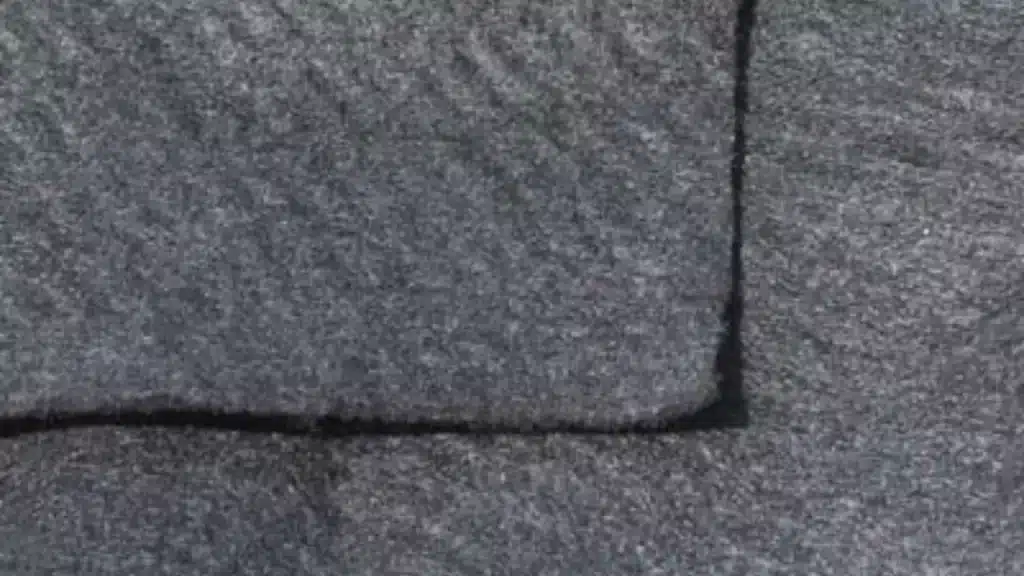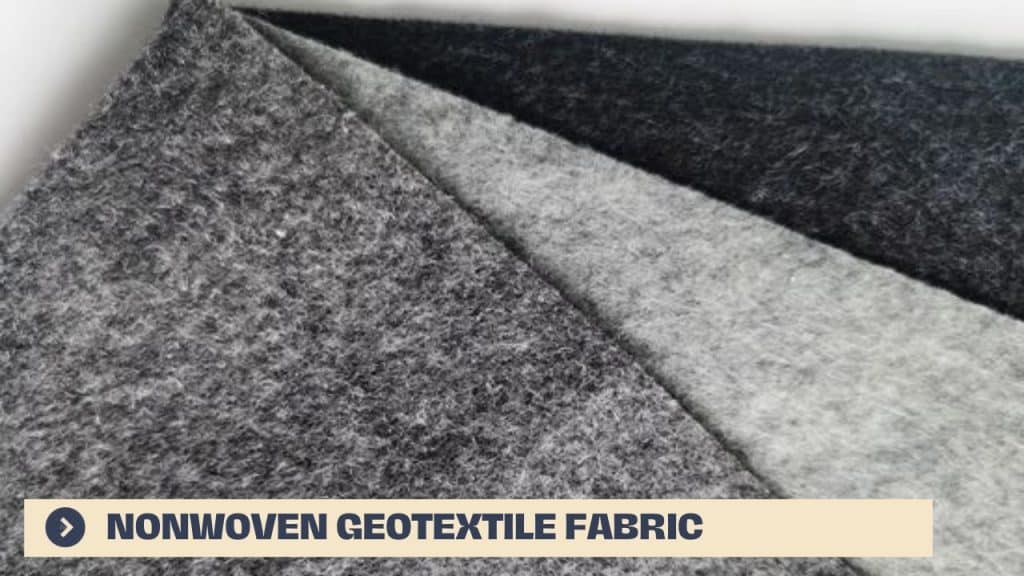Are you seeking to know about Nonwoven Geotextile fabric in detail? Geotextiles are one of the expanding segments of the technical textile industry. Because geotextiles are manufactured for practical reasons. It comes in a variety of shapes, and sizes, and for a specific function. Fabrics used in geotechnical applications are known as geotextiles.
Nonwoven geotextile is the most used fabric in the Geotextile industry. Nonwovens in geotextiles are laid to create a roll. Despite their strength and hardness, they are light and simple to handle. This article will present an overview of geotextile non woven fabric.
What is Nonwoven Geotextile Fabric?
Nonwoven geotextile is a felt-like fabric composed of synthetic materials. This fabric is a form of stabilizing fabric produced from polypropylene. The fabric is bonded thermally. This fabric is made from a variety of nonwoven materials. It includes polypropylene, polyamide, and polyethylene polymer.

Nonwovens in geotextiles laid to create a roll and are light. This fabric is simple to handle despite its strength and hardness. This fabric does not lose strength over time in the same manner that woven cloth does. This makes it excellent for use in land, drainage systems, driveways, and roadways.
Characteristics of Non-woven Geotextile Fabric
Nonwoven geotextiles are made from various fibers such as polyester, polypropylene, nylon, and other high-performance polymers. Several factors, including the type of fiber, manufacturing process, and intended use, determine nonwoven geotextile fabric characteristics.
Strength and Durability
Nonwoven geotextile fabric is designed to be strong, durable, and resistant to damage from abrasion, punctures, and environmental factors. The fabric’s strength is determined by its tensile strength, which measures the maximum load that the fabric can withstand before breaking. Nonwoven geotextiles have high tensile strength and are designed to withstand the stresses and strains of heavy loads and environmental conditions.
Chemical Resistance
Non woven geotextile fabric is designed to be resistant to damage from chemicals and other harmful substances found in the soil and environment. The fabric’s chemical resistance properties are determined by the type of fiber used and the manufacturing process. Nonwoven geotextiles are typically made from synthetic fibers that are resistant to chemical damage.
UV Resistance
Non-woven geotextile fabric is designed to be resistant to damage from ultraviolet (UV) radiation from the sun. The fabric’s UV resistance properties are determined by the type of fiber used and the manufacturing process. Nonwoven geotextiles are typically made from synthetic fibers that are resistant to UV damage.
Thickness
Nonwoven geotextile fabric is available in a range of thicknesses to provide varying levels of strength and durability for different applications. The manufacturing process determines the fabric’s thickness, with thicker fabrics typically having higher strength and durability.
Perforation Resistance
geotextile non woven fabric is designed to be resistant to damage from perforation caused by sharp objects such as rocks and roots. The fabric’s perforation resistance properties are determined by its puncture resistance, which measures the maximum load that the fabric can withstand before puncturing.
Ease of Installation
Nonwoven geotextile fabric is designed to be easy to install, with lightweight and flexible materials that can be easily cut and shaped to fit the desired application. The fabric’s ease of installation properties are determined by its flexibility.
You May Also Like To Know: Polypropylene Non Woven Fabric
Non-woven Geotextile fabric Classification
Nonwoven geotextile fabrics can be classified based on their manufacturing process, fiber type, and intended use. Let’s explore the classification of this fabric:
Geomatex RPES
Geomatex RPES is a nonwoven geotextile fabric that comes in a variety of colors. The primary manufacturing polymer is 100 percent recycled polyester. This fabric is manufactured by contemporary technology. It’s used to build retaining walls, linear buildings, garbage dumps, and drainage systems.
Geomatex NTB 10
Geomatex NTB 10 is a kind of nonwoven geotextile fabric manufactured with cutting-edge technology. This fabric is made entirely of polypropylene polymer. It’s used to build retaining walls, linear buildings, garbage dumps, and drainage systems, among other things.
Geomatex NTI
Geomatex NTI is a technologically advanced geotextile non woven fabric. Polypropylene is the most common manufacturing polymer. It’s used to build retaining walls, linear buildings, garbage dumps, and drainage systems, among other things.
Geomatex NTB 20
The Geomatic NTB 20 non-woven geotextile fabric is a popular non woven geotextile fabric. This Nonwoven Geo-main fabric’s composition is 100 percent recycled polyester polymer. It’s used to build retaining walls, linear buildings, garbage dumps, and drainage systems, among other things.
Geomatex RPP
Geomatex RPP is a nonwoven geo-fabric that comes in a variety of colors. This fabric’s principal manufacturing polymer is 100 percent recycled polypropylene. It’s used to build retaining walls, linear buildings, garbage dumps, and drainage systems, among other things.
Bontec NW
Bontec NW is a nonwoven geotextile fabric that is thermally bonded. Polypropylene is the most common manufacturing polymer. It’s used to build retaining walls, linear buildings, garbage dumps, and drainage systems, among other things.
Nonwoven Geotextiles Fabrics Application
Nonwoven geotextile fabric has specific unique properties. These features allow the fabric to use for separation, filtration, and drainage. This fabric is used in Roads and railroads, offshore land reclamation, and roadside. Moreover, rail side, canal banks, and embarkments are the applications for this fabric.
Filtration
This fabric is used as a Filtration Medium to prevent soil erosion and retain soil particles while allowing water to pass through. The fabric’s filtration properties are determined by its permeability, which measures the rate at which water can flow through the fabric. Nonwoven geotextiles have high permeability, allowing water to pass through quickly while retaining soil particles.
Separation
This fabric is used to provide separation between soil layers of different characteristics to prevent mixing and maintain the stability of the structure. The fabric’s separation properties are determined by its porosity, which measures the degree of open space between the fabric’s fibers. Nonwoven geotextiles have high porosity, allowing for efficient separation of soil layers.
Drainage
Non woven geotextile fabric is used as a drainage medium to allow water to flow through the structure and prevent water buildup. The fabric’s drainage properties are determined by its transmissivity, which measures the rate at which water can flow through the fabric. Nonwoven geotextiles have high transmissivity, allowing for efficient drainage of water from the structure.
Nonwovens used in geotextiles have a particular elasticity. This functionality makes them suitable for anchoring landfill construction, drainage, and filtering applications. It is ideal for paving applications in both asphalt and concrete highways for separation. This fabric can function as a barrier to water infiltration under the notion of barrier application.
Final Thought
The Nonwoven Geotextile Industry has a unique environmental history. It now offers various modern fabric and polymer-based products. With geomaterials, the geotextiles industry is reducing its reliance on low-cost labor. Using nonwovens in geotextiles will make the world a better place for future generations.

